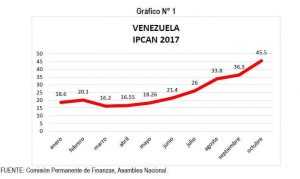BUENOS AIRES CUSTOMS
| The customs Buenos Aires is the building that houses the General Customs Directorate un Buenos Aires, capital de Argentina Republic. It is the work of architects Lanús and Hary, opened in 1910 and in 2009 became a National Historic Landmark. Ins address is Azopardo 350. |
HISTORY
Buenos Aires Customs existed since 1580 , when the city was founded by the advance Juan de Garay . From 1855-1896 he occupied the building known as Customs Taylor , a construction semicircular raised on land reclaimed from the river, which was demolished to be filled in the bank to build the Puerto Madero . Its space and its peculiar form today still present in the Columbus Park .
As Customs had to go to occupy extempore called Building of National Revenue (land now occupied by the Palacio de Hacienda ), it was decided that the construction of a suitable building was needed to accommodate such a body in the process of expansion thanks to the agro – export model .
Thus, he was assigned to the new “palace” land Customs born with the coastal filling the new harbor, bordered by the avenues Paseo Colon and Ingeniero Huergo, and then streets Belgrano and Moreno.
Work began by January 1909 , under the presidency of Jose Figueroa Alcorta . The building was inaugurated on 8 of October of 1910 , four days before Figueroa Alcorta was succeeded in office by Roque Sáenz Peña and under the celebration of the centenary of the May Revolution . However, the new Customs began to be occupied just the next 6 January .
The 28 of September of 2009 , Decree 1309 to 1309 signed by President Cristina Fernandez de Kirchner declared aNational Historic Landmark.
DESCRIPTION
The most prominent feature of the building of the Buenos Aires Customs is its absolute symmetry. It occupies the entire block, and has two twin towers that can be seen even at a considerable distance from the dikes of Puerto Madero. Another decorative element are representative moldings representing the shield of Argentina located on the inscription «CUSTOM» in the main facades looking to Azopardo Street and Avenue Huergo.
The building style is French academic, has a basement, ground floor and three upper floors, with a mansard roof of slate, a material that is also of the two towers.The main entrances are at the center of symmetry of the facades overlooking the street Moreno and Avenida Huergo, and consist of large porches on two levels high, framed by huge columns on outgoing volumes. As for their environments, it is distributed among 23 rooms and 90 local.
DIRECTORATE GENERAL CUSTOMS
The Directorate General of Customs (DGA) of Argentina , is one of three agencies that make up the Federal Public Revenue Administration (AFIP) , together with the General Tax Directorate (DGI)and the Directorate General of Resources of the Social Security ( DGRSS) .
It is responsible for implementing the legislation on the import and export of goods, as well as traffic control goods entering or returning to the customs territory.
Its main function is to assess, classify, monitor and control the entry and exit of godos, as well as media that are transported, ensuring compliance with regulations.
BRIEF HISTORY OF ARGENTINA CUSTOMS
Origins
Customs Argentina is one of the oldest institutions of the country. It was established as an organization several years before the same be content Argentina as a nation, since its beginning dates back to the time of the Spanish conquest and colonization.
Historians believe that the oldest customs activity history on land del Plata are the provisions of the Royal Decree that the Emperor Carlos V signed on July 19 of 1534 in favor of Don Pedro de Mendoza, authorizing him to undertake the conquest and «populate the lands and provinces that are in the river Solis called La Plata».
Said Royal Decree provided for exemption from duty of 7.5% (almojarifazgo) of all goods that settlers brought with them as long as they were for personal use or consumption and not for commercial purposes, since, in the latter case, Treasurer Don Rodrigo de Villalobos, who integrated the expedition of Mendoza, should formulate the corresponding charges.
The first official record is kept of operation dates from 1 June 1586 and corresponds to the entry of goods introduced by the ship «Nuestra Señora del Rosario», from Santos, Brazil, owned by Don Alfonso Vera.
At that time, Buenos Aires and the Pampas region were a marginal area whose business contacts abroad were given from two major activities: the export of vessels to Brazil (whose special permits were granted by the Spanish authorities) and smuggling.
During this period the port of Buenos Aires became a point of -lícito income and ilícito- of various products as well as African slaves. This led to early complaint Lima merchants and the establishment in 1622 of a «dry customs» in the city of Cordoba, transferred to Jujuy in 1696, which taxed with 50% goods heading north.
This situation of relative marginality changed in the second half of the eighteenth century from the Bourbon reforms. In 1776 the created Viceroyalty of the Rio de la Plata, which Buenos Aires was the capital. The creation of the Viceroyalty encouraged commercial activities in Buenos Aires to be allowed to trade with other Spanish agencies.
Two years later, in 1778, the Corona sanctioned Regulation of Free Trade, which eliminated the old monopoly exercised byother ports in their relationship with the Peninsula and authorized Buenos Aires, among others, to trade directly with Spain. Control of these activities with the creation of the Royal Custums of Buenos Aires, was also reinforced body responsable for administering foreign trade of the Viceroyalty.
For many years the development of customs activity was linked to slow population growth in the region Plata registered a little commercial activity and consequently reduced revenue.








